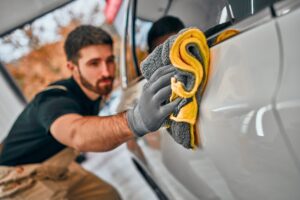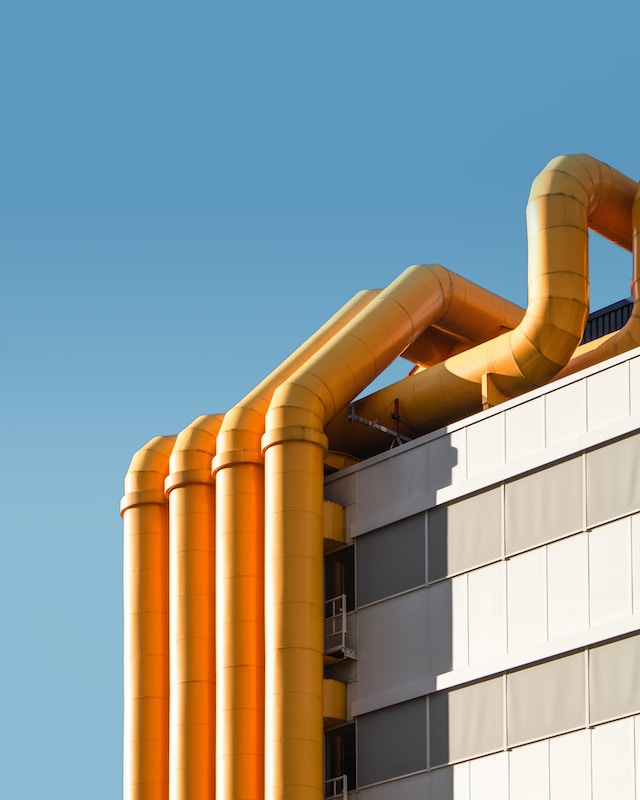Window tinting has become a popular solution for improving the comfort, aesthetics, and energy efficiency of residential, commercial, and automotive spaces. From reducing glare and UV exposure to enhancing privacy and security, window tinting offers many benefits for property owners and occupants. Visit https://www.windowtintingwichita.com/ for more information.

Window tinting, or window film installation, involves applying a thin, adhesive film to the interior or exterior surface of windows and glass doors. These films are formulated from polyester or polymer materials embedded with UV-blocking additives, pigments, and coatings that alter the optical properties of the glass.
Window tinting serves multiple purposes, including reducing solar heat gain, blocking harmful UV rays, enhancing privacy, and improving the overall appearance of buildings and vehicles.
Benefits of Window Tinting
- Solar Heat Reduction: One of the primary benefits of window tinting is its ability to reduce solar heat gain and improve indoor comfort. Tinted window films block a significant portion of solar radiation, preventing excess heat from entering the interior space and reducing the need for air conditioning. This helps maintain a more consistent and comfortable indoor temperature while lowering energy consumption and utility costs.
- UV Protection: Window tinting provides effective protection against harmful ultraviolet (UV) rays emitted by the sun. UV-blocking window films filter out up to 99% of UV radiation, preventing sun damage to furniture, flooring, artwork, and other interior furnishings. Additionally, UV protection helps reduce the risk of skin cancer, premature aging, and other adverse health effects associated with prolonged UV exposure.
- Glare Reduction: Glare from sunlight can be a nuisance, causing eye strain, discomfort, and reduced visibility indoors. Tinted window films help minimize glare by diffusing sunlight and reducing brightness levels without obstructing outdoor views. This creates a more pleasant and visually comfortable environment for occupants, particularly in spaces with large windows or exposure to direct sunlight.
- Enhanced Privacy: Privacy is a key consideration for homeowners, businesses, and vehicle owners alike. Window tinting offers an effective solution for enhancing privacy by obscuring the view into interior spaces without compromising natural light transmission. Privacy window films are available in various opacity levels, allowing property owners to customize their level of privacy based on their preferences and needs.
- Security and Safety: Security window films provide an additional layer of protection against forced entry, vandalism, and accidents. These films are designed to hold glass fragments together upon impact, reducing the risk of injury from broken glass and deterring potential intruders. Security window films are commonly used in commercial buildings, storefronts, and residential properties to enhance safety and security.
Types of Window Tinting Film
- Dyed Film: Dyed window tinting film consists of multiple layers of dyed polyester or polymer materials that absorb and block sunlight. These films are known for their rich color and aesthetic appeal, making them popular for automotive and decorative applications. Dyed films provide moderate heat and glare reduction but may be less durable and prone to fading over time.
- Metalized Film: Metalized window tinting film incorporates metallic particles or coatings that reflect sunlight and heat away from the glass surface. These films offer superior heat rejection and UV protection compared to dyed films and provide a sleek, reflective appearance. However, metalized films may interfere with electronic devices, such as GPS or cell phone signals, and are not recommended for use on insulated or double-pane windows.
- Carbon Film: Carbon window tinting film is formulated from carbon particles embedded in a polyester or polymer matrix. These films offer excellent heat rejection, UV protection, and durability, making them a popular choice for automotive and residential applications. Carbon films provide a matte, non-reflective finish and are less prone to fading or discoloration over time compared to dyed films.
- Ceramic Film: Ceramic window tinting film utilizes advanced ceramic nanoparticles that block solar heat and UV radiation while maintaining optical clarity and color stability. These films offer superior heat rejection, glare reduction, and UV protection without interfering with electronic signals or obstructing visibility. Ceramic films are ideal for high-performance applications where maximum comfort and durability are desired.
- Privacy Film: Privacy window tinting film is designed to obscure the view into interior spaces while allowing natural light transmission. These films are available in various opacity levels, ranging from translucent to opaque, and can be customized to meet specific privacy requirements. Privacy films are commonly used in residential, commercial, and automotive settings to enhance privacy without sacrificing aesthetics or natural light.
Installation Methods
Window tinting film can be installed using several methods, depending on the type of film and the complexity of the installation:
- Adhesive Application: Adhesive application is the most common method for installing window tinting film. The film is cut to size and applied directly to the interior or exterior surface of the glass using a special adhesive backing. A squeegee or heat gun is used to remove air bubbles and ensure proper adhesion to the glass.
- Static Cling Application: Static cling application is a temporary method for installing window tinting film without adhesive. The film is cut to size and applied to the glass using static electricity to cling to the surface. Static cling films can be easily removed and repositioned without leaving residue or damage to the glass.
- Heat Shrink Application: Heat shrink application is commonly used for curved or contoured surfaces where traditional adhesive application may be challenging. The window tinting film is cut to size and applied to the glass using a special adhesive backing. Heat is then applied to the film using a heat gun or steamer to shrink the film and conform to the shape of the glass.
- Professional Installation: For optimal results and long-lasting performance, professional installation by trained technicians is recommended. Professional installers have the expertise, tools, and experience necessary to ensure proper alignment, adhesion, and finishing of window tinting film. Additionally, professional installation may be required to maintain warranty coverage and ensure compliance with local regulations.
Important Considerations
Before installing window tinting film, several important considerations should be taken into account to ensure successful results:
- Local Regulations: Check local building codes and regulations regarding window tinting to ensure compliance with applicable laws. Some jurisdictions may have restrictions on the darkness or reflectivity of window tinting film, particularly for automotive applications.
- Glass Compatibility: Not all window tinting films are compatible with all types of glass. Consult with the manufacturer or a qualified installer to determine the suitability of the film for your specific glass substrate, including tempered, laminated, or low-e glass.
- Warranty Coverage: Verify the warranty coverage and terms provided by the manufacturer or installer before purchasing window tinting film. Some films may come with warranties covering defects, fading, or discoloration, while others may offer additional protection against accidental damage or installation errors.
- Maintenance Requirements: Understand the maintenance requirements and limitations of the window tinting film to ensure optimal performance and longevity. Most films can be cleaned with mild soap and water using a soft cloth or sponge, but abrasive cleaners or tools should be avoided to prevent damage to the film.
- Professional Installation: While DIY installation is possible for some window tinting films, professional installation is recommended for larger or more complex projects, such as commercial buildings or vehicles with multiple windows. Professional installers have the training, tools, and expertise necessary to ensure proper alignment, adhesion, and finishing of the film.
Window tinting offers a multitude of benefits for enhancing comfort, privacy, and energy efficiency in residential, commercial, and automotive settings. Whether reducing solar heat gain, blocking harmful UV rays, or enhancing the aesthetics of a space, window tinting films provide a cost-effective and versatile solution for property owners and occupants. By understanding the different types of films available, installation methods, and important considerations for choosing the right tint, individuals can make informed decisions to improve the comfort, functionality, and longevity of their windows. Whether tackling a DIY project or enlisting the help of professional installers, proper planning and attention to detail are essential for achieving optimal results and maximizing the benefits of window tinting.



